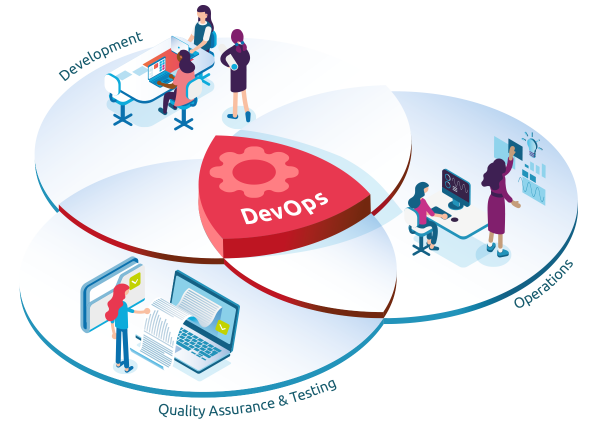DevOps vs Traditional IT
Understanding the differences between modern DevOps practices and traditional IT methodologies is crucial for organizations aiming to improve efficiency, collaboration, and innovation.
DevOps is a modern approach to software development and IT operations that emphasizes collaboration, automation, and continuous improvement. Traditional IT, on the other hand, follows a structured, phased approach where development and operations teams work separately, often resulting in delays and inefficiencies.
DevOps
DevOps integrates development and operations teams to enable **faster, more reliable software delivery**. It promotes collaboration and uses automation to streamline workflows, reducing manual errors and increasing efficiency.
- Collaboration: Development and operations teams work together.
- Automation: Testing, deployment, and monitoring are automated.
- Continuous Improvement: Regular feedback ensures ongoing refinements.
- Scalability: Infrastructure can be managed dynamically.

DevOps enables continuous collaboration and automation.
Traditional IT
Traditional IT relies on a **linear, sequential approach** where development, testing, and deployment are completed in separate stages. While structured, this methodology often leads to **delays, inefficiencies, and a lack of agility**.
- Phased Approach: Development, testing, and deployment occur in distinct phases.
- Manual Processes: Limited automation, increasing the risk of human errors.
- Siloed Teams: Lack of collaboration between development and operations.
- Rigid Structure: Changes are difficult to implement mid-process.
Key Differences: DevOps vs Traditional IT
| Aspect | DevOps | Traditional IT |
|---|---|---|
| Process | Continuous Integration & Continuous Deployment (CI/CD) | Linear, phased approach (Dev → Test → Deploy) |
| Collaboration | Integrated teams with shared responsibilities | Development and operations teams work separately |
| Speed | Faster releases with automated processes | Slower releases due to manual interventions |
| Tools | Jenkins, Docker, Kubernetes, Terraform | Traditional deployment and server tools |
| Feedback | Real-time feedback and continuous improvements | Feedback is delayed due to a phased approach |
| Risk Management | Automated testing reduces risks | Manual testing increases potential for errors |
Conclusion
DevOps fosters collaboration, automation, and agility, enabling faster and more efficient software releases. Traditional IT, although structured, often struggles with inefficiencies due to its manual, siloed nature.
Organizations that adopt DevOps benefit from faster releases, greater efficiency, and improved reliability. As a result, most modern companies are making the transition to DevOps to stay ahead in the evolving IT landscape.